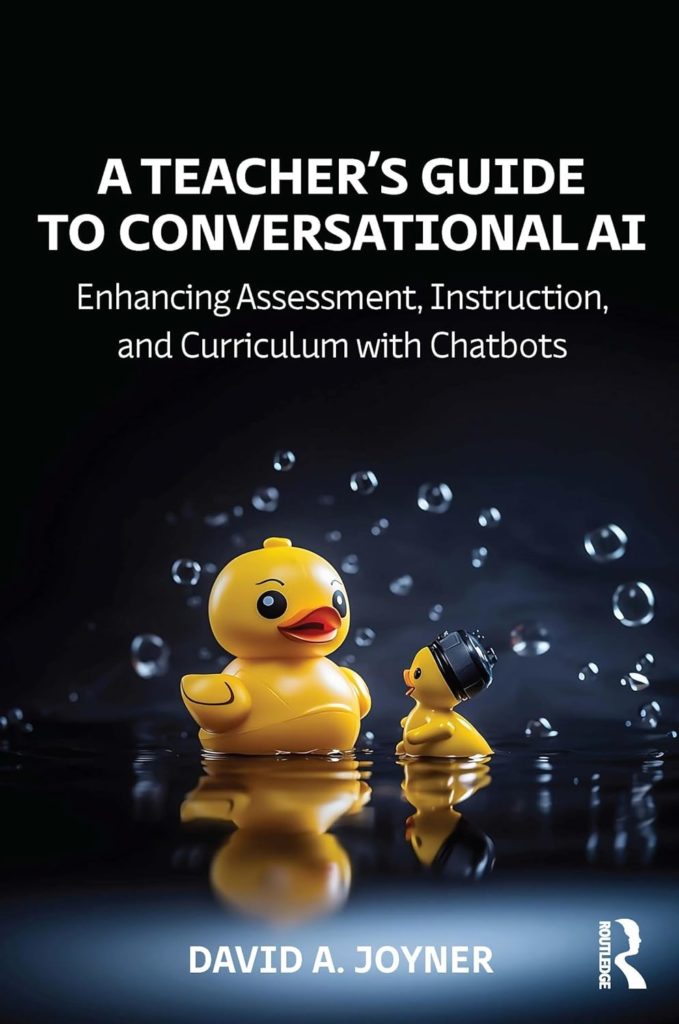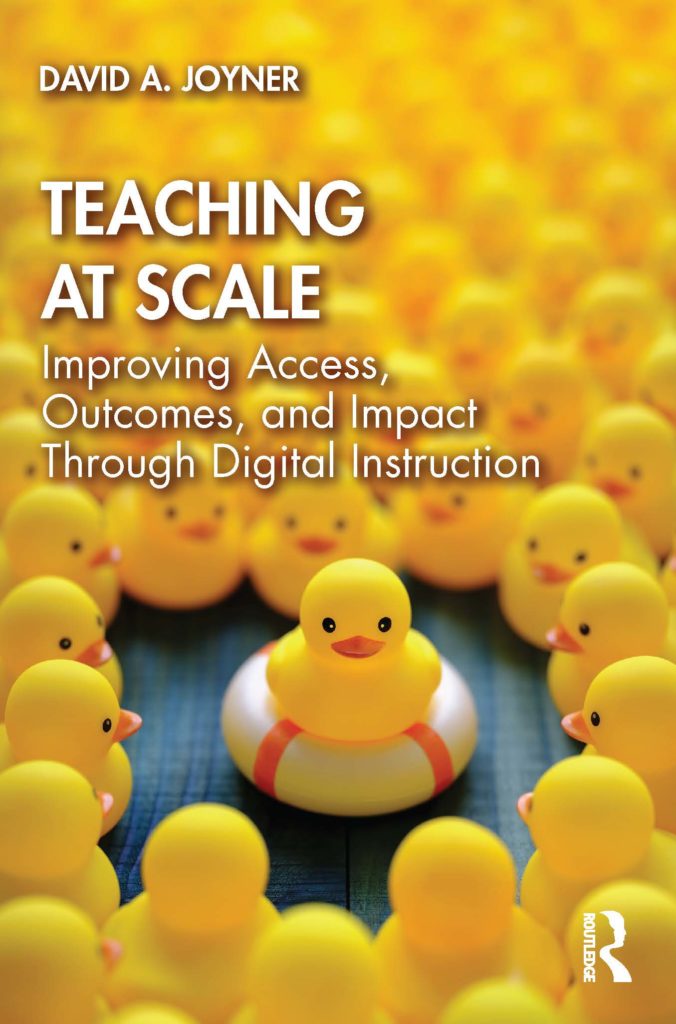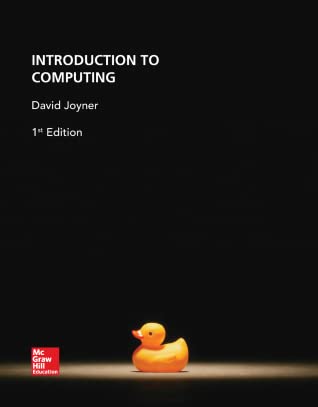I’ve been giving a lot of talks recently on the relationship between AI and education, and as part of that I usually start by discussing a little about the overall history of how technology and education interact. My visuals for describing that evolved over time into a sort of model that I’m calling the Technology and Education Spiral. That said, I feel like something like this has probably been proposed before. I googled around a bit (and also asked ChatGPT), but most of the things I’ve seen are more attempts to capture the way technology and education work at any given point in time—not how they influence each other over time. So, if you know of someone or something that has proposed this idea more eloquently already, please do let me know.
That said, here’s the basic idea:
We start at the top, with teachers teaching some skill. Then, technology comes along that can do that skill for students. “Technology” in this context represents a huge number of different things, though: calculators, for example, perform the skill of graphing parabolas, replacing the skill of finding x- and y-intercepts by hand. Spell checkers perform the skill of fixing spelling mistakes, replacing the skill of looking up words in the dictionary for their proper spelling. Washing machines perform the task of washing clothes, replacing the skill of adding soap, mixing clothes, and… well, whatever else went into washing clothes before washing machines weren’t as common. And of course, ChatGPT performs the skill of generating text.
Based on the arrival of the new technology, teachers then “panic” about what and how to teach. I say “panic” because the media picture usually exaggerates the panic; but for every article that talks about teachers panicking about AI-generated plagiarism, I find there are several more that instead advocate for embracing it.
But regardless of whether we say that teachers “panic about”, “thoughtfully contemplate”, “reluctantly address”, or “eagerly embrace” what and how to teach with the new technology, there nonetheless comes a phase of reflection about how the new tool changes things, which leads to a change to our curriculum. Sometimes it truly does replace old skills altogether, the way calculators replaced learning to look up estimated logarithms in the back of a math textbook or the way digital search engines largely removed the need for physical card catalogs.
More often, though, the new technology recontextualizes the skill, forcing us to focus more on why we had students learn to perform the skill in the first place: graphing calculators can graph parabolas with ease, but we still teach students to draw them by hand because we recognize a value in deeply understanding the relationship between the formula and the visualization in a way that we generally believe will not develop if students overrely on a calculator too early.
And in the most exciting cases, the new technology more fundamentally changes what we can do as educators. Once we teach students to graph parabolas by hand, we then move to teaching them to do so on a calculator because we recognize the tool will allow them to practice more problems, get even better, and move on to even more advanced problems. Students equipped with the tool end up doing more than students without, even though they still learned many of the same skills along the way.
And that’s why this is better described as the Technology and Education Spiral rather than cycle:

Curriculum comes out of this process with a new end point, a level of achievement and skill attainment that would have been impossible without the new technology. Students today learn more in several fields than they did a few decades ago not because they’ve gotten smarter and not because the fields themselves have changed, but because of the role technology plays. It equips them to learn more, learn faster, and thus achieve more in less time. We routinely have undergraduate students solve problems that once perplexed the greatest geniuses of their era—and while part of that is because we can prepare them better given that those geniuses already found the answer, part of it is that our students have access to tools that can help enormously.
There are reasons that ChatGPT feels more revolutionary than these previous developments. I’ll probably talk about that in a separate post. But fundamentally, we’re seeing the same cycle play out again: a technology has emerged that can do some of the things we historically have asked students to do themselves. That forces us to ask: which of these things no longer need to be taught at all? Which of these things should be taught initially, but then offloaded onto AI once the student demonstrates their own mastery? And what things can we do now that we have this new tool that we never could have done before?
With scientific calculators, the answers to those three questions were: looking up logarithm estimates in a textbook; graphing parabolas to represent an equation; and solving advanced problems for which the work to do them purely by hand is impractical. What will be the answers for generative AI?
















